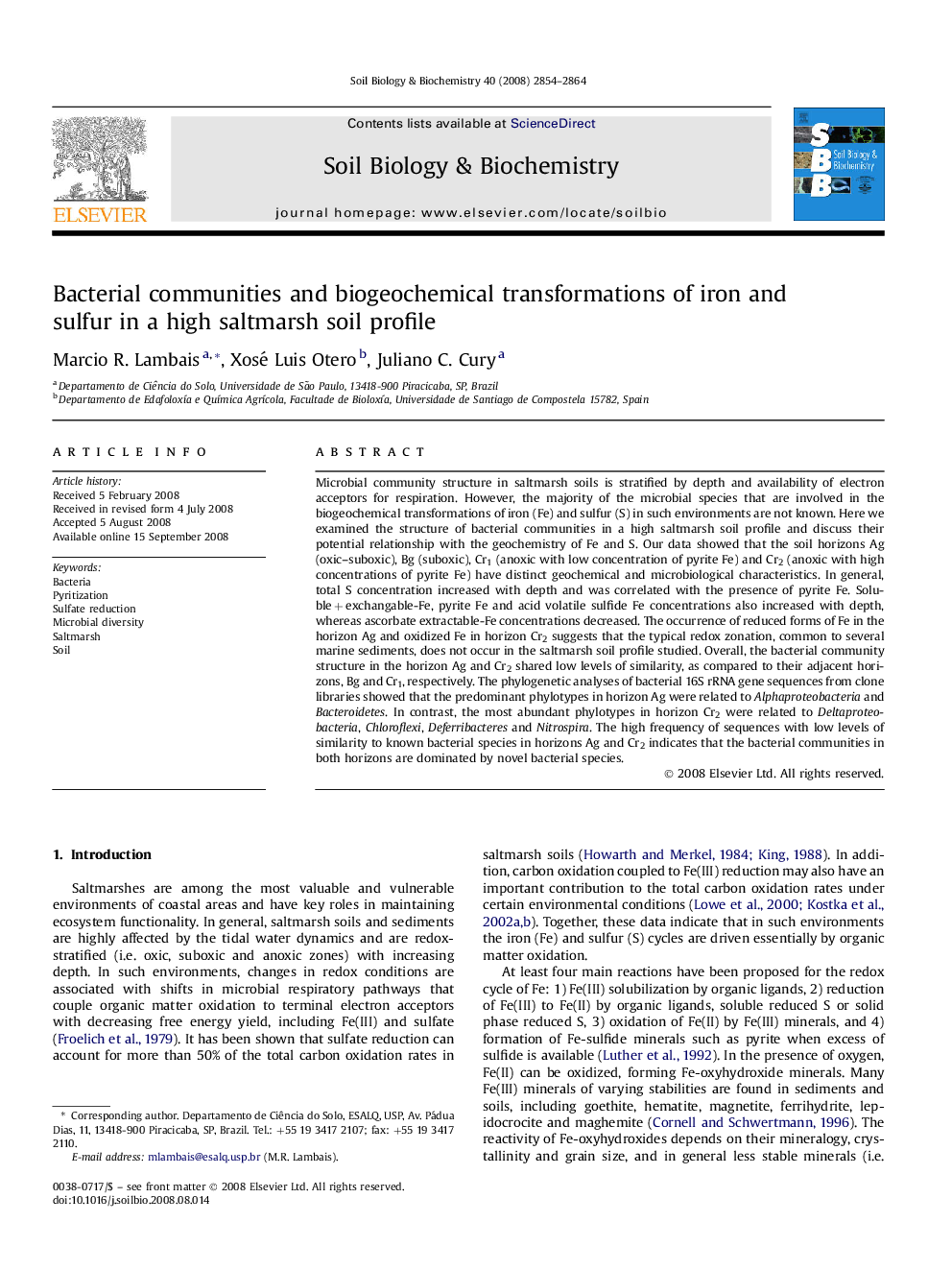| Article ID | Journal | Published Year | Pages | File Type |
|---|---|---|---|---|
| 2026848 | Soil Biology and Biochemistry | 2008 | 11 Pages |
Microbial community structure in saltmarsh soils is stratified by depth and availability of electron acceptors for respiration. However, the majority of the microbial species that are involved in the biogeochemical transformations of iron (Fe) and sulfur (S) in such environments are not known. Here we examined the structure of bacterial communities in a high saltmarsh soil profile and discuss their potential relationship with the geochemistry of Fe and S. Our data showed that the soil horizons Ag (oxic–suboxic), Bg (suboxic), Cr1 (anoxic with low concentration of pyrite Fe) and Cr2 (anoxic with high concentrations of pyrite Fe) have distinct geochemical and microbiological characteristics. In general, total S concentration increased with depth and was correlated with the presence of pyrite Fe. Soluble + exchangable-Fe, pyrite Fe and acid volatile sulfide Fe concentrations also increased with depth, whereas ascorbate extractable-Fe concentrations decreased. The occurrence of reduced forms of Fe in the horizon Ag and oxidized Fe in horizon Cr2 suggests that the typical redox zonation, common to several marine sediments, does not occur in the saltmarsh soil profile studied. Overall, the bacterial community structure in the horizon Ag and Cr2 shared low levels of similarity, as compared to their adjacent horizons, Bg and Cr1, respectively. The phylogenetic analyses of bacterial 16S rRNA gene sequences from clone libraries showed that the predominant phylotypes in horizon Ag were related to Alphaproteobacteria and Bacteroidetes. In contrast, the most abundant phylotypes in horizon Cr2 were related to Deltaproteobacteria, Chloroflexi, Deferribacteres and Nitrospira. The high frequency of sequences with low levels of similarity to known bacterial species in horizons Ag and Cr2 indicates that the bacterial communities in both horizons are dominated by novel bacterial species.
